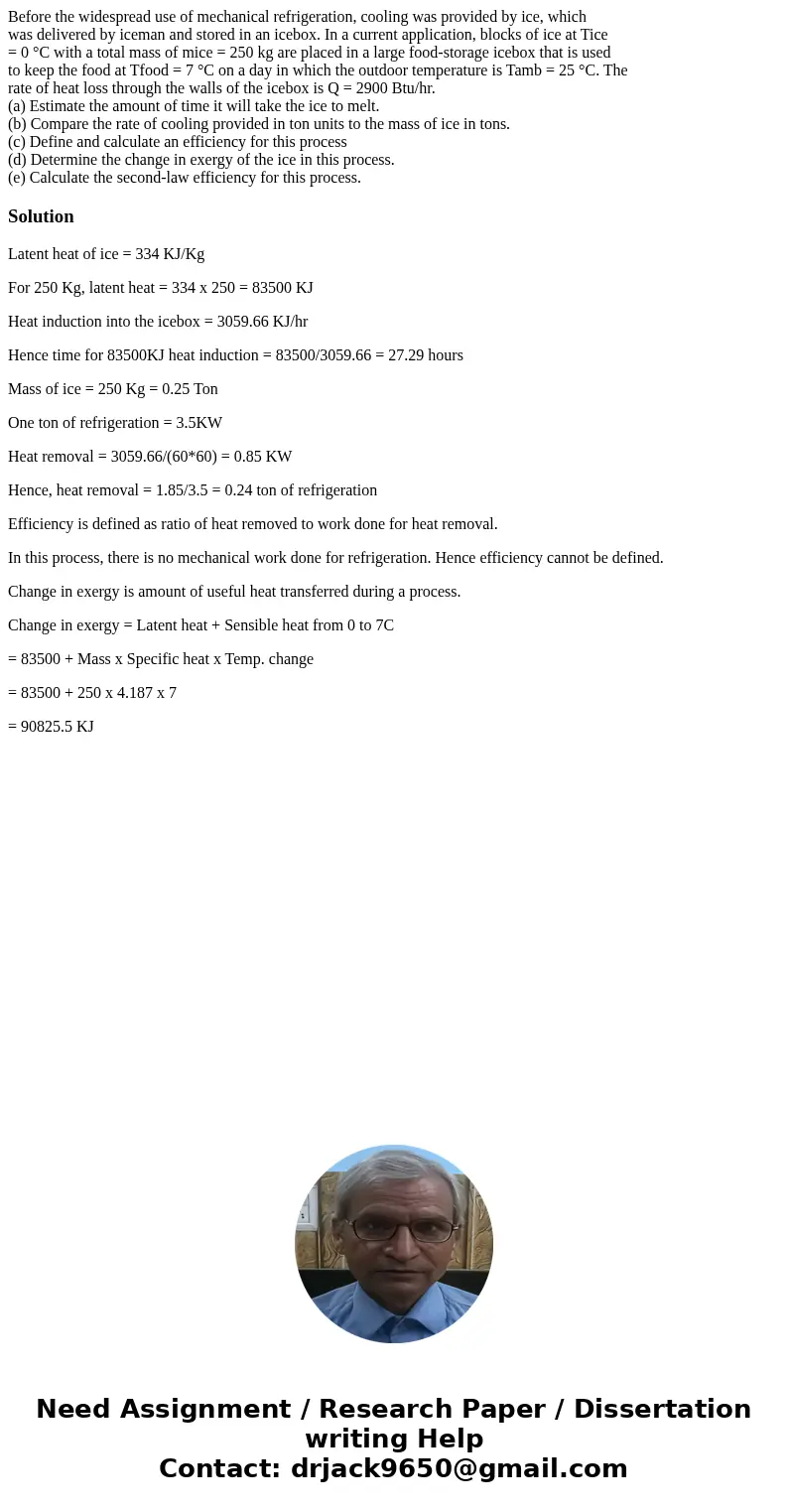Before the widespread use of mechanical refrigeration coolin
Before the widespread use of mechanical refrigeration, cooling was provided by ice, which
was delivered by iceman and stored in an icebox. In a current application, blocks of ice at Tice
= 0 °C with a total mass of mice = 250 kg are placed in a large food-storage icebox that is used
to keep the food at Tfood = 7 °C on a day in which the outdoor temperature is Tamb = 25 °C. The
rate of heat loss through the walls of the icebox is Q = 2900 Btu/hr.
(a) Estimate the amount of time it will take the ice to melt.
(b) Compare the rate of cooling provided in ton units to the mass of ice in tons.
(c) Define and calculate an efficiency for this process
(d) Determine the change in exergy of the ice in this process.
(e) Calculate the second-law efficiency for this process.
Solution
Latent heat of ice = 334 KJ/Kg
For 250 Kg, latent heat = 334 x 250 = 83500 KJ
Heat induction into the icebox = 3059.66 KJ/hr
Hence time for 83500KJ heat induction = 83500/3059.66 = 27.29 hours
Mass of ice = 250 Kg = 0.25 Ton
One ton of refrigeration = 3.5KW
Heat removal = 3059.66/(60*60) = 0.85 KW
Hence, heat removal = 1.85/3.5 = 0.24 ton of refrigeration
Efficiency is defined as ratio of heat removed to work done for heat removal.
In this process, there is no mechanical work done for refrigeration. Hence efficiency cannot be defined.
Change in exergy is amount of useful heat transferred during a process.
Change in exergy = Latent heat + Sensible heat from 0 to 7C
= 83500 + Mass x Specific heat x Temp. change
= 83500 + 250 x 4.187 x 7
= 90825.5 KJ

 Homework Sourse
Homework Sourse